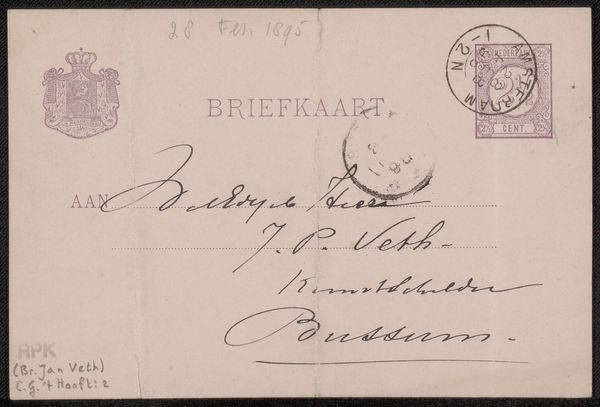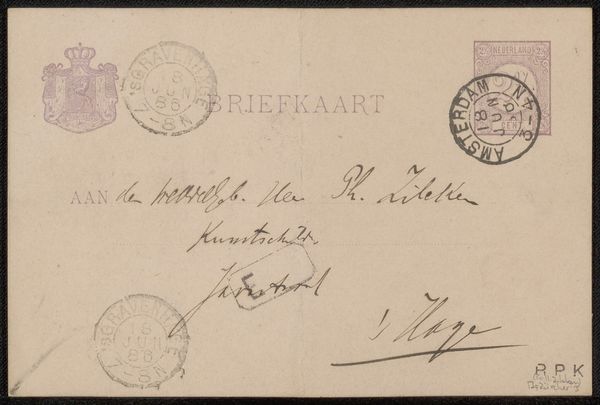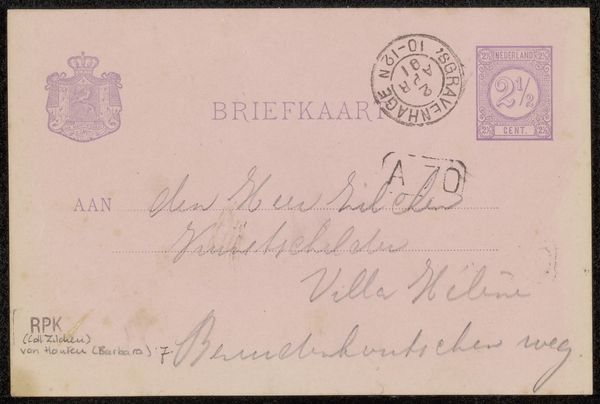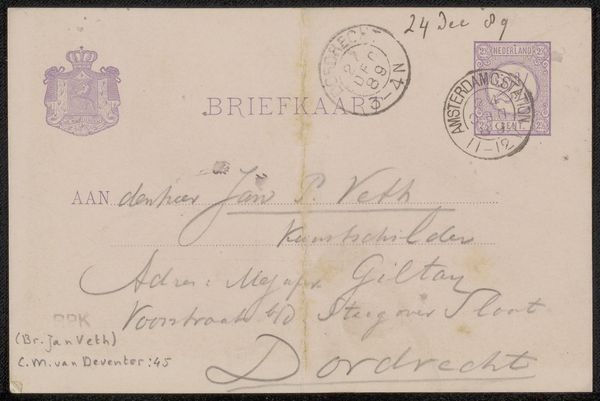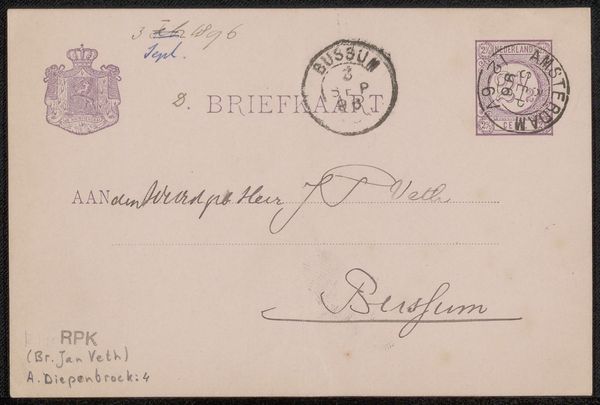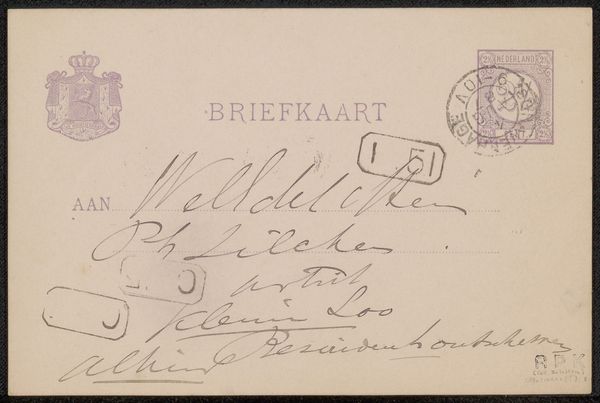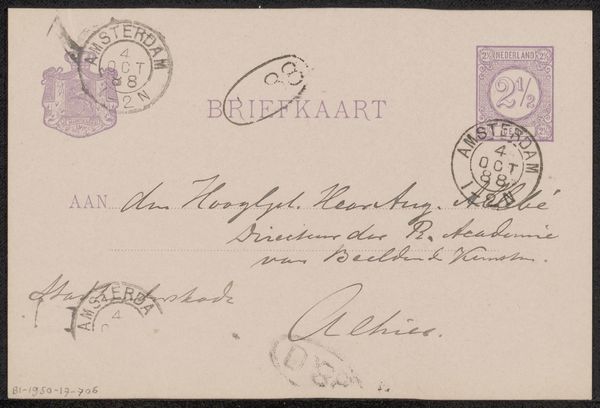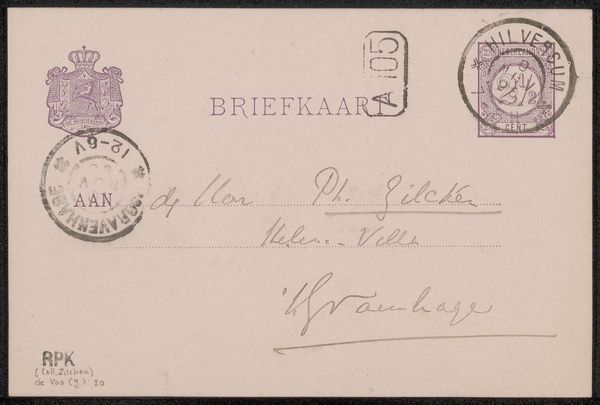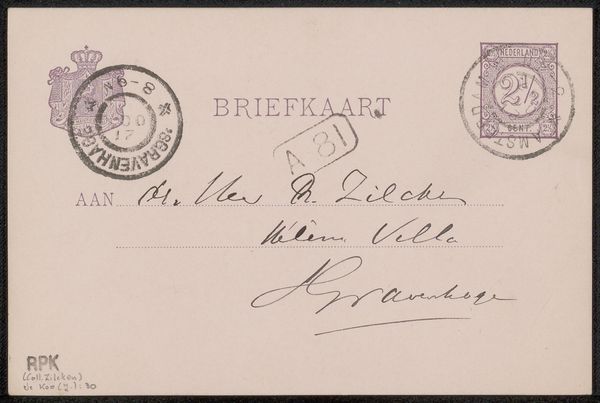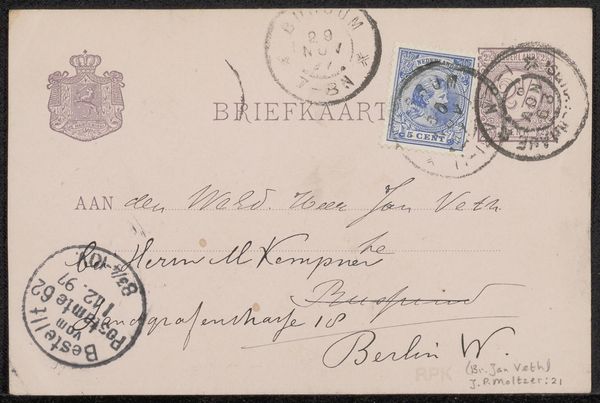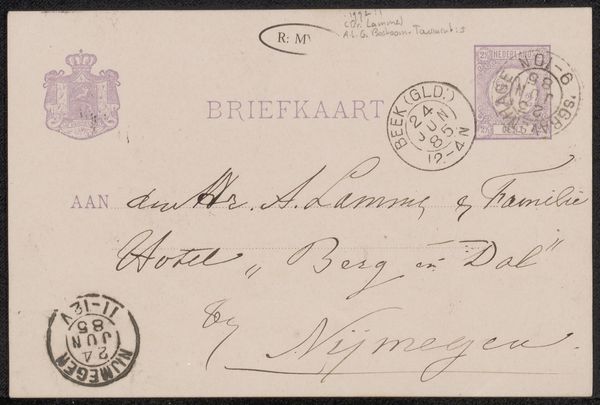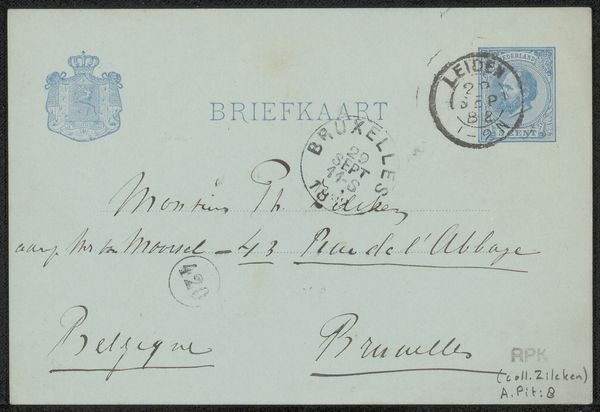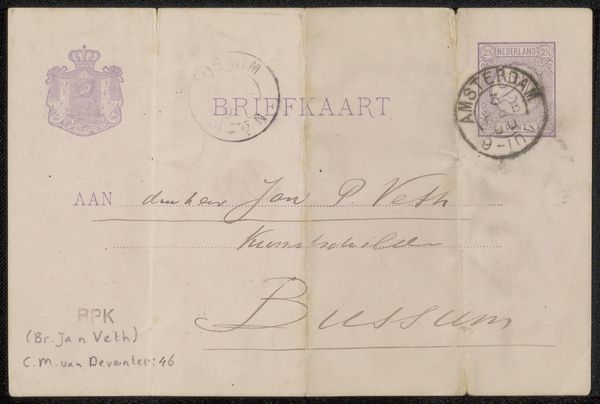
drawing, paper, ink, pen
#
portrait
#
drawing
#
script typography
#
hand-lettering
#
hand drawn type
#
hand lettering
#
paper
#
personal sketchbook
#
ink
#
hand-drawn typeface
#
pen-ink sketch
#
pen work
#
sketchbook drawing
#
pen
#
sketchbook art
Copyright: Rijks Museum: Open Domain
Editor: This is a postcard to Jan Veth, possibly from 1892, created by M.C. Lebret, rendered in pen and ink on paper. There's a personal quality to it, like a snapshot of correspondence from another era. What's your interpretation of this piece? Curator: I see it as a powerful glimpse into the social networks of the late 19th century. The postcard format itself was relatively new, facilitating rapid communication across distances. What can a seemingly simple, everyday object like this postcard reveal about artistic and intellectual communities? Lebret’s choice of hand-lettering over printed text is a deliberate artistic decision; how might we see that against standardized mass-produced printing? Editor: So you're saying the handwriting adds a layer of personality, and pushes back against industrialization? Curator: Precisely! Think about who Jan Veth was – an influential art critic. This postcard could be more than just a casual greeting. It might have been a strategic attempt by Lebret to engage with Veth and his circle, to seek recognition or support. How does power dynamics of that time play out for female artists? It's a coded form of communication embedded within social and political structures. Do you see those erasures? Editor: I do. Were there aspects that Lebret might have wanted to redact or conceal? What do we make of that self-censorship, or strategic manipulation, if we want to see it that way? Curator: That's a crucial question to explore. Also, think about this as an object intended for circulation. What meanings accrued as it passed through different hands, mail systems, or postal workers? What's lost or gained as it enters a museum collection? It calls into question what's considered “public” and “private” communication at the time, in regards to artmaking and political movements. Editor: I never considered all those different points of view of reception. Thanks, this helps me contextualize it further! Curator: And it reminds us how even mundane objects can illuminate broader social and artistic issues.
Comments
No comments
Be the first to comment and join the conversation on the ultimate creative platform.
